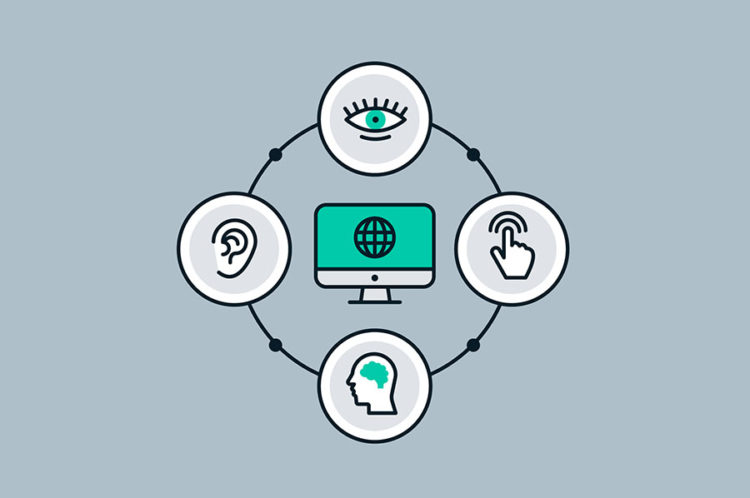Book Review: Creating a Culture of Accessibility in the Sciences
Creating a Culture of Accessibility in the Sciences
by Mahadeo A. Sukhai and Chelsea E. Mohler
Reviewed by Dr Martyn Parker (Department of Statistics)
The "sciences" cover a broad range of disciplines and specialisms, from the practical to the entirely theoretical. There are specific characteristics that differentiate sciences from other fields. Many sciences include laboratory-based work with strict safety protocols and operating procedures. Science communication includes esoteric notation drawn from a growing alphabet of symbols using two-dimensional rather than one-dimensional representation. Some students studying science can face significant barriers to their participation, whether during laboratory sessions, captions during live sessions or in accessing module notes. No matter how solution-oriented their approach, science educators face challenges both practical and technological, ensuring their teaching practices are inclusive and enable participation by all students. Recent legislative changes combined with the sudden shift to online delivery brought, for many, accessibility into sharp focus. This book provides advice on understanding barriers, developing inclusive education practices across the science disciplines, and bringing about accessibility cultural change.
"Sukhai and Mahler present a detailed resource covering the background, frameworks, and advice to remove barriers to science education. However, the authors aim not to provide a "how-to" guide, a manual of pedagogy, or a list of reasonable adjustments. Instead, they aim to develop conversations, dialogue, and the best audience for these discussions."
– Dr Martyn Parker
The book is aimed at four audiences: educators in higher education, pre-university educators, students with disabilities seeking a science education, and disability coordinators. The topics are organised into seven parts, further split into twenty-three chapters. Chapters are generally short and start with a story of lived experiences or personal narratives, often from one of the authors. The authors are careful to cater for their audience by setting out chapter objectives and defining their language. This approach benefits those entering this area for the first time and accommodates different terminology and international perspectives on accessibility. For example, the authors use North American terminology such as 'reasonable accommodation' but carefully define its meaning, so its equivalent is clear. Where necessary, the authors draw on publications and data to set the context for their discussion. The book's organisation provides a straightforward narrative. The chapters' self-contained nature will benefit readers with specific questions or areas they wish to explore; they can engage with chapters in any order.

Part One
Part one discusses students with disabilities in the sciences examining the academic environment and the culture of accessibility. This part explores data and educational equality. These two chapters set the context for the book drawing on the personal story of a visually impaired individual who set out to be a scientist. The authors draw on multiple sources, including relevant United Nations conventions, to highlight the fundamental right of education for all. Data shows how science-based education can be segregated rather than integrated, demonstrating how few students with disabilities study science beyond compulsory schooling. Educational transitions present barriers at the point of entry, for example, entry to higher education. The authors emphasise the importance of pre-transition interactions that create a positive impression and demonstrate a commitment to inclusion.
Part Two
Part two focuses on the barriers faced by students. The three chapters examine barriers in laboratory-based and practical sciences, student perspectives and their experiences, and the roles played by educators. The authors highlight how historically, those with disabilities were discouraged from fields requiring precision or rigour. These barriers still manifest themselves. For example, a student entering higher education may experience reduced support, see limited successful role models, and must be strongly self-advocating. The differences in structural support between school and university are often jarring. A lack of staff professional development means pre-conceptualising a student's potential success based on characteristics and introduce further barriers. The chapter defines the "gatekeeper function", where students encounter active resistance to support or encouragement. Student stories show how educators fall into three categories. The first is engaged, interested, and takes the opportunity to develop themselves and the student. The second is hostile and antagonistic and create new barriers. The third the authors identify as the most harmful are those who ignore and do not acknowledge the student. The authors identify how strong positive, welcoming, inclusive, and solution-oriented educators are critical in developing an accessible culture. Nevertheless, even these staff may not possess the necessary skills to know what to do or say and thus, professional development is critical.
Part Three
Having looked at accessibility through the lens of barriers, part three examines students as educators. This part's four chapters consider students revealing their reasonable adjustments, students as agents of change, the impact on mental health and peer support networks. The key thrust of this part is the idea of 'disclosure'; that is, discussing adjustments. The authors advocate for a process of dialogue between students and educators. They identify the positives and negatives of this approach, including educating the educator, facilitating adjustment, and understanding, loss of privacy, stigma, and it should not be necessary in an inclusive education environment. Next, the authors examine how students can become trailblazers for change, overturning the association of "impossible" and "accessible". This advocacy leads to a discussion of mental health and well-being. The focus is on the increased cognitive load for those with disabilities and increased feelings of imposter syndrome. Peer networks provide some mitigation, and the book sets out key benefits and characteristics of good peer-support networks.
Part Four
Part four discusses students as learners. This part covers reasonable adjustments, universal design, and inclusive teaching practices. The approach is rooted primally in laboratory-based subjects with examples drawn from these areas. The authors address key "myths" associated with reasonable adjustments, highlighting how "gatekeepers" can create an undue hardship for students. They characterise good educators as those that can separate evaluation methods from the competency being evaluated. The book contrasts reasonable adjustments and universal design. The authors discuss how one addresses a weakness in the learning environment while one removes the environmental weakness for all. The authors note that even educators who advocate for universal design and create accessible approaches may still encounter situations requiring original thinking. The chapter on inclusive-teaching practices explicitly discusses the difference between explicit and overt expectations. This "hidden curriculum" is the unwritten implicit academic, social, and cultural expectations fundamental to success and may require careful and precise statements for some learners.

Part Five
Part five examines students as mentees, trainees, and leaders. The four chapters consider educators mentoring and supervising students, students in leadership roles and professional development. These chapters set out examples of these relationships and how educators and students may approach them. The first three chapters look at mentoring, supervision, and leadership and provide principles to ensure success in these areas. The final chapter discusses the positive impact of professional development on educators and students and how networks can help support students.
Part Six
Part six contains seven chapters and considers reasonable adjustments (or accommodations). The chapters cover practical and fieldwork, laboratory sessions, laboratory-based technology, assistive technology, accessible formats, simulated learning and accessing laboratory spaces. Most of the chapters cover laboratory or practice disciplines. The authors revisit some of their early myths busting regarding reasonable adjustments. The myths are made explicit in terms of technical assistance in practical sessions. Chapter 19 provides seven case studies to illustrate how technology can provide accessibility in a wide variety of different laboratory situations, for example, computer-aided instrumentation in a physics session. The chapters on assistive technology and accessible formats offer a broad overview of these areas, but technological advances mean these areas are constantly changing, and specifics are not provided. Chapter 22 highlights how simulated learning environments, that is, artificial representations of the real world, can be employed to achieve educational outcomes and have the potential, in appropriate circumstances, to form part of a reasonable adjustment.
Final Part
The book's final part, part seven, brings the threads together, setting out general principles and concludes with a vision for the future. Within this vision is the need to address the "gatekeeper" problem through training that builds an accessible culture that includes positive role models and positive engagement during educational transitions. The authors aspire to encourage more students with or without disabilities to follow science careers.
Other Aspects
The book aims to meet the needs of four related but different audiences. This approach can mean some areas or disciplines are covered fleetingly. Throughout the book, the authors interchangeably use "sciences" and STEM (Science, Technology, Engineering and Mathematics). Nevertheless, case studies, examples and advice usually cover lab-based subjects. Consequently, those in theoretical disciplines or specialisations may feel they are reading a text that doesn't encompass their subject. Readers in this situation need to spend time contextualising the materials and reflecting on the messages the book contains, drawing out the underlying principles. Some treatments of neurodiversity or specific learning differences would be helpful to many readers both within and outside the laboratory context.

Concluding Remarks
Overall, this book presents two aspects of accessibility. Firstly, the journey of one of the authors to becoming a successful geneticist. Secondly, a set of guiding principles to develop a positive accessibility culture. The book provides extensive coverage of a range of accessibility areas, and although some chapters consider laboratory-based subjects, there is plenty to engage other readers. As the authors state, this book is not a "how-to" guide. I would recommend this to educators looking at accessibility beyond the provision in their modules and towards strategic or departmental level or to students at an educational transition.
Martyn Parker
Department of Statistics
January 2022

